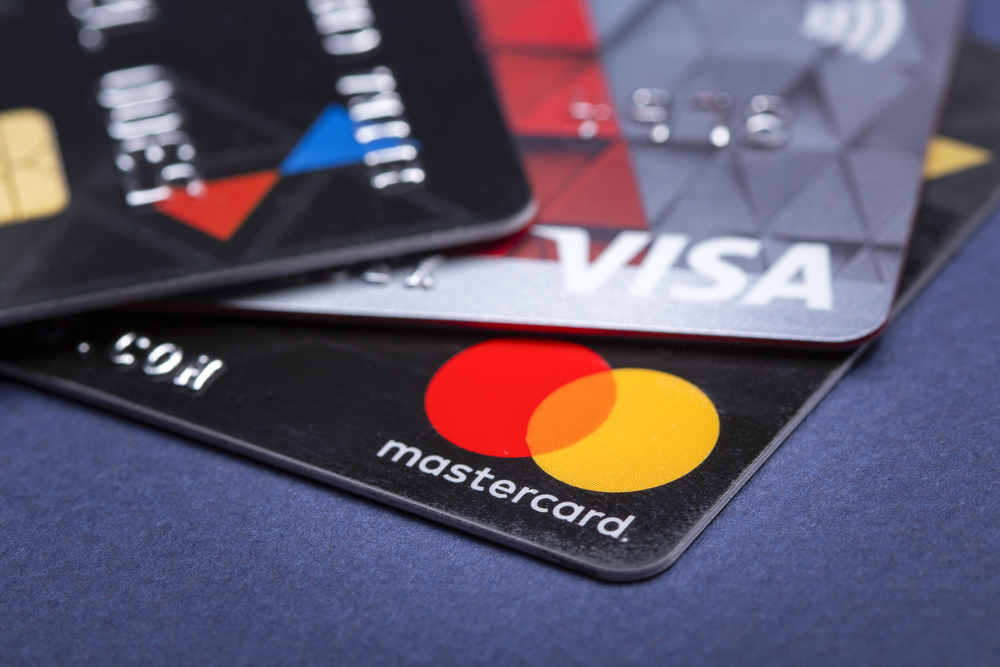
China Trade War Tariffs Crippling Your Electronics Business? Here’s How to Fight Back
Sep 26, 2019
Who is this blog for?
• Consumer electronics merchants with a high rate of declined transactions
• Merchants having trouble selling to international consumers
• Merchants with transaction amounts over USD $500
• Large merchants motivated to change or improve their payment processing
• Consumer electronic merchants that want a new payment provider
Some consumer electronics merchants are on the front lines of the growing trade war between the United States and China. The biggest threats are slimmer profit margins, lower sales volume, and increased fraud. This blog article will focus on solutions to limit their impact. Particularly, when trying to stay profitable during Q4 of 2019 and beyond.
There’s fear that tariffs will take a bite out of consumer electronics stores. Don’t let it happen to you.
Tariffs likely to pummel the consumer electronics market
The trade war between Donald Trump and China has hurt a wide range of consumer electronics companies. In fact, the total cost to companies has already been estimated to total just north of $10 billion.
However, many report that the damage is only set to get worse with the introduction of new 15% tariffs on a range of finished products. TVs, smart speakers, drones, smart watches and Bluetooth headphones are just some of the affected products. By the time the full range of measures are introduced on December the 15th, imports worth over half a trillion dollars will be subject to punitive tariffs.
As a result, if you’re a US-based consumer electronics merchant importing Chinese-made television sets, they’re about to become 15% more expensive. Likewise, if you’re a China-based manufacturer you may also be worried, because products are about to become more expensive to US electronics merchants than neighboring Vietnam and Taiwan.
Finally, Beijing is set to retaliate with similar tariffs. US-made electronics will be exorbitantly expensive to the average Chinese consumer.
These scenarios have got merchants looking at better options for running their business – such as improved payment processing – to increase sales and claw back some of the profits lost to tariffs.
Did you know that Asia-based merchants are establishing companies in the EU, US and Canada in order to target international audiences? Interested in learning how you can get payment processing in these regions? Reach our team of experts by clicking here to get help with your business setup.

Drop dropshipping and opt for fulfilment
There are several ways to strengthen your payment funnel. If you can afford it, go for traditional fulfilment instead of dropshipping.
Dropshipping provides cheap and easy access to consumer electronics goods for e-commerce retailers. But, it comes with risks like high instances of money laundering or fraud. It’s why big-name players such as Stripe now point-blank refuse to work with dropshippers. Besides, there’s less control over inventory and your supplier will take more of your revenue because they take on more liability.
Ordering and holding inventory is a more expensive method, but it has big benefits. For example, you have greater margins than with a dropshipper. You know more about your inventory and likely won’t sell items out of stock. Working with a trusted fulfilment company can ensure shipping is timelier. This is crucial, because delayed shipments can result in angry customers. Plus, instead of calling your customer support line for a refund, they may call their bank for a chargeback instead.
A contractual agreement between your store and a reputable fulfilment service can help you get a merchant account. Once you’re approved, this solution presents huge opportunities to scale. It makes accepting debit and credit card processing easier. It also leads to an increase in sales.
An offshore merchant account is your secret weapon
Have you ever noticed that you have a high number of declined international orders? Well, an offshore merchant account can be your solution to getting more international sales approved.
Going global will open up your company to new markets. It could also help you get closer to foreign suppliers, which could reduce operating costs. By diversifying in new countries companies may be able to negate the impact of specific US-Chinese trade tariffs.
For example, a US-based company could launch a location in the EU to secure a merchant account. This market would cover all 31 countries that are part of the European Economic Area (EEA) including the UK and Germany. This tactic alone will help increase the approval of Europe-based orders. And, those sales includes online debit purchases. It will also help lower payment processing costs for your European customer base.
Asian-based merchants that have a high decline rate can explore a Canadian or US-based merchant account solution. A move like this would help get a foothold in the North American consumer electronics market.
Lower the risk associated with the consumer electronics industry
Consumer electronics is already considered a high-risk industry for several reasons. First of all, it suffers from very high rates of fraud. This includes card-not-present (CNP) fraud, chargeback fraud and friendly fraud. Chargeback and friendly fraud are specific problems within this vertical. Recent data has shown that a staggering 86% of chargebacks are fraudulent. Using the latest machine-learning anti-fraud technology to stop online crooks from stealing is a start. But merchants need multiple options when it comes to reducing risk levels.
High fraud statistics are part of the reason leading card company Visa has issued new rules. Fraud-to-sales ratios and dispute-to-transaction ratios have been reduced from 1% to 0.9% respectively. As a result, these regulations leave little elbowroom for acquiring banks to negotiate with merchants when it comes to fraud and disputed transactions.
A lot of consumer electronics vendors these days are newcomers to the market. And, a new business must stand out from seasoned competitors. So, it’s necessary to show acquiring banks and other payment providers that you are low risk.
Prices that high can leave you open to high levels of scams online. So, if you’re a new business, it makes sense to begin selling lower-priced items to build trust with acquiring banks and other payment providers. High-ticket items are a cause for concern for payment solution providers within the consumer electronics industry. TVs, drones and smart watches can run into the thousands of dollars at retail.
It’s good practice for startups to build a reputable processing history by applying for monthly volumes under $50,000. For example, asking for $30k per month before applying for $100k per month and beyond.
Beat consumer electronic tariffs by becoming more attractive to payment processors
The ongoing trade war between China and America is proving tough for merchants in the consumer electronics industry. Yet, the challenges they present can be beat.
Avoid the pitfalls of high-risk fulfillment methods (like dropshipping) while positioning your company as a stable and low-risk merchant. By lowering fraud and selling low-ticket items, vendors can begin to gain the trust of payment providers and scale without worrying about suspended processing.
Also, explore securing payment processing capacity in the growing consumer electronics markets abroad. Europe, Asia and North America offer your business the chance to boost sales and bolster your payment funnel.
It’s time to make your next move
DirectPayNet has been helping high-risk merchants get domestic and offshore payments for over 10 years. Whether it’s merchant accounts, ACH or other payment processing you need, we have awesome solutions, tools and qualified team members to ensure you succeed.




